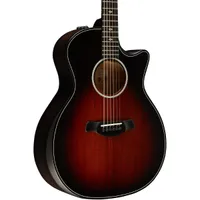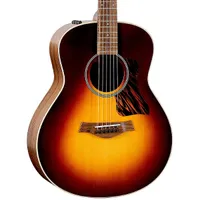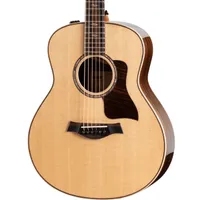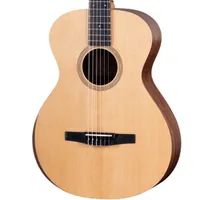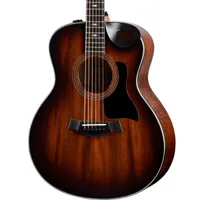Best Taylor guitars 2025: my pick of the most popular Taylor acoustics
I've picked out all the top Taylor guitars, matched to the type of player they suit best
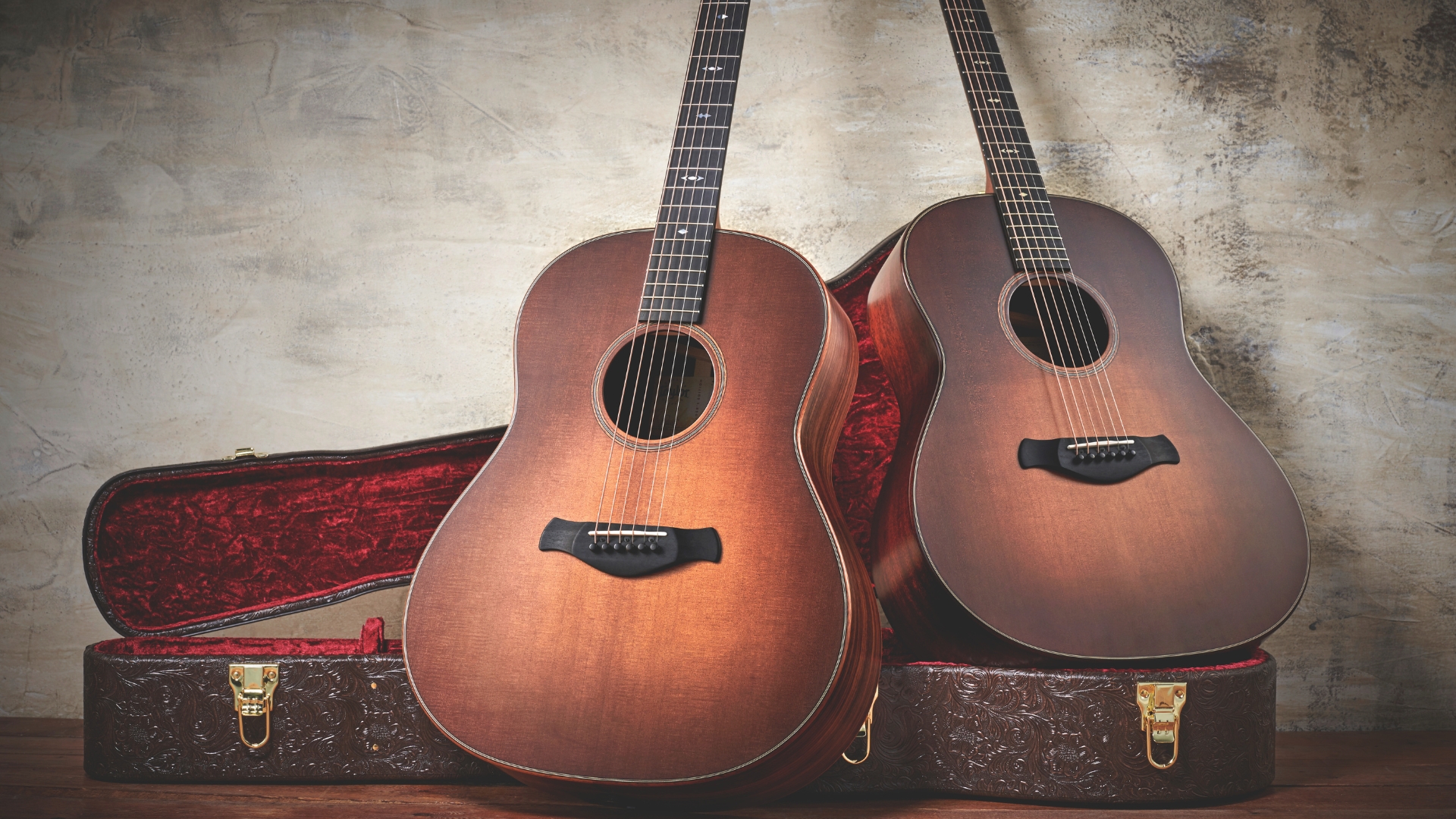
In my experience, little comes close to the feel, playability, and sound of a Taylor acoustic. The Taylor guitar lineup spans everything from mid-range to the very highest echelon of acoustics, so choosing the best Taylor guitar might seem like a difficult decision – how can you even compare an $800 acoustic with one that sits at over $4,000?
Here at Guitar Player, we've been testing Taylor acoustics since their inception, and collectively we've had our hands on more Taylors than we'd care to remember. You will see subtle differences between their more accessible acoustics to their high-end guitars in the specific wood used and the location they are made. More expensive instruments come out of the USA factory, whereas the more affordable lines typically come from Mexico.
The good thing is that whichever Taylor guitar you buy, it will still feel like a quality instrument, regardless of the cost or where it's made. If you want the best all-rounder, I'd go for the Taylor Builder's Edition 517e. It sounds incredible unplugged or using the built-in electronics, and has that classic dreadnought look without a cutaway. For something a little less expensive that is compact enough for traveling with, have a look at the Taylor GS Mini-e Koa, which is available for below $1,000, and delivers those stunning Taylor sounds and looks for less.
To help you navigate buying a new Taylor, whether it's your first or your third, I've put together several sections of this guide to advise you. If you're buying for the first time, I've got a how to choose section with some sage advice, an FAQ that answers all the most commonly asked questions around Taylor guitars, and a glossary of key terms for breaking down the acoustic guitar-specific lingo.
My top picks
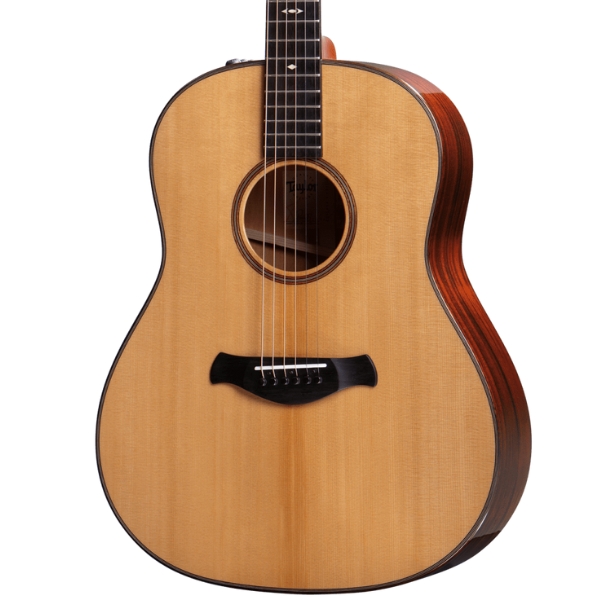
From the torrefied Sitka spruce top to the Tropical Mahogany back, sides, and neck, the tonewoods used throughout the 517e scream luxury. Pair that with Expression System 2 Electronics and you have an acoustic that sounds incredible, unplugged or amplified.
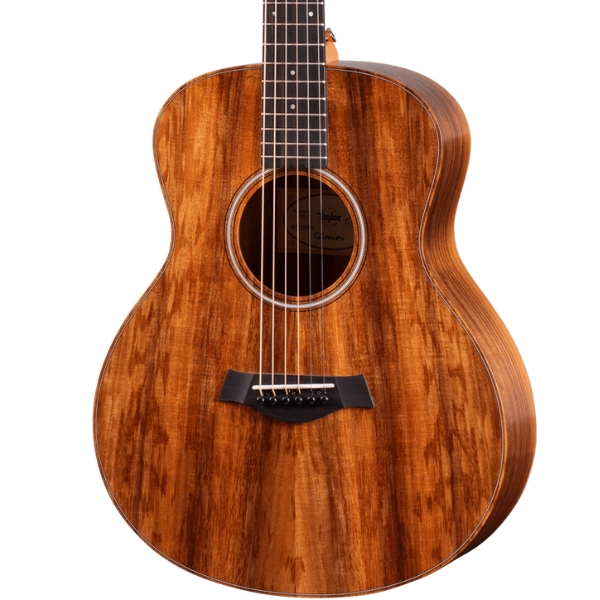
Mini acoustics might seem a bit cutesy – more suitable for kids than serious players – but the GS Mini-e Koa is anything but a toy. This is full-fat Taylor with the use of exotic and beautiful Hawaiian Koa for the body and Neo-Tropical Mahogany on the neck. It’s bold and punchy and is a great shout for travelling players.
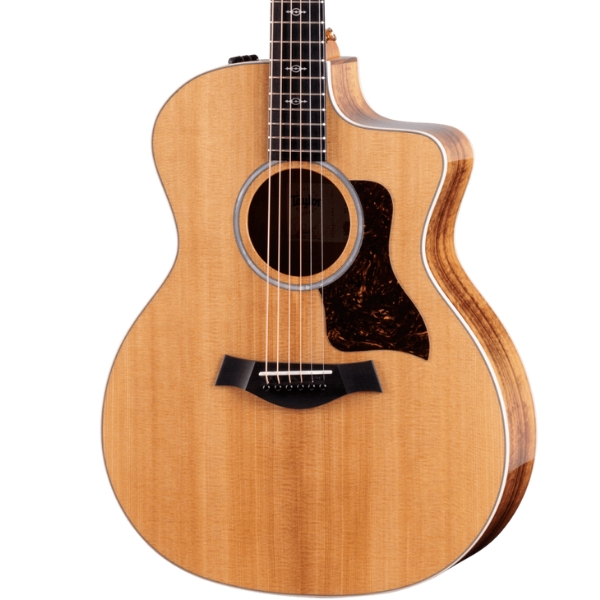
For those looking to purchase their first Taylor, the 214ce-K DLX has just about everything you could want from a high-end acoustic, but without the intimidating price tag. Don’t get me wrong, the 214ce-K isn’t cheap, sitting just below $2,000, but it has a rich and complex tone that you would associate with guitars twice the price.
Best overall
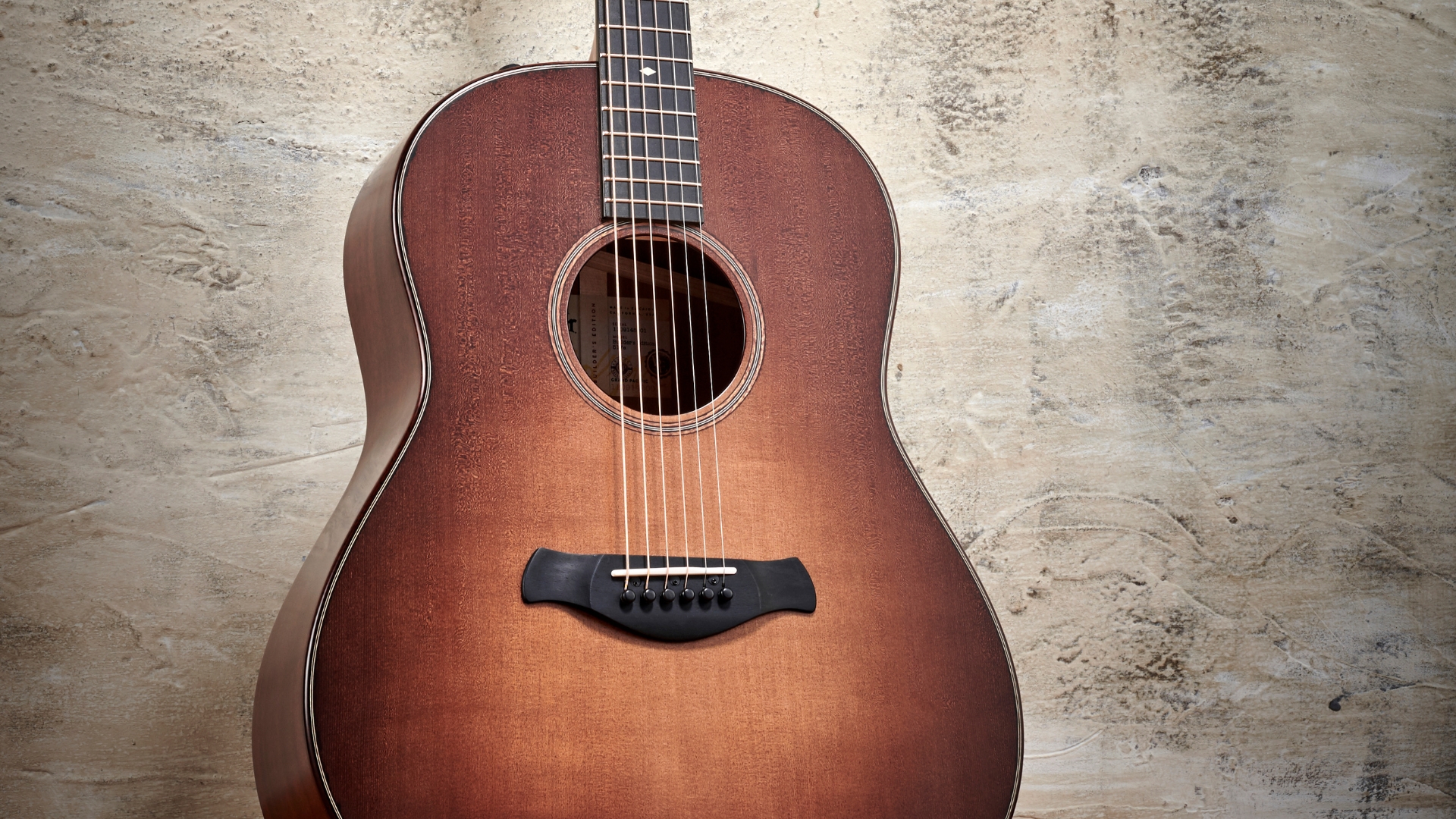
1. Taylor Builder’s Edition 517e
Our expert review:
Specifications
Reasons to buy
Reasons to avoid
✅ Buy if you want a quintessential Taylor guitar: With the looks, feel, and sound of a prestige acoustic, this Builder's Edition 517e is an incredible instrument.
❌ Avoid if you don’t need US-made: Many of Taylor's Mexican models come close to this quality but with a significant cost-saving.
When Taylor launched its Builder’s Edition 517e Grand Pacific in 2019, it came as a surprise to many. Here was a vintage-look, round-shouldered dreadnought that had been brought kicking and screaming into the 21st century by Andy Powers’ innovative V-Class bracing (read more about that in our buying advice at the bottom of the page).
The torrefied Sitka spruce top and Silent Satin finish help to deliver a mature, broken-in voice that comes without those tactile ‘squeaks’ you normally expect from a new gloss guitar. Meanwhile, the compound carve-neck profile transitions from a subtle ‘V’ at the nut to a rounded ‘C’, providing superb comfort and facilitating higher fret work.
That V-Class bracing provides wonderfully consistent sustain across the fretboard, along with pristine intonation that means there’s less chance of hitting a sour note while fingerpicking.
Best travel
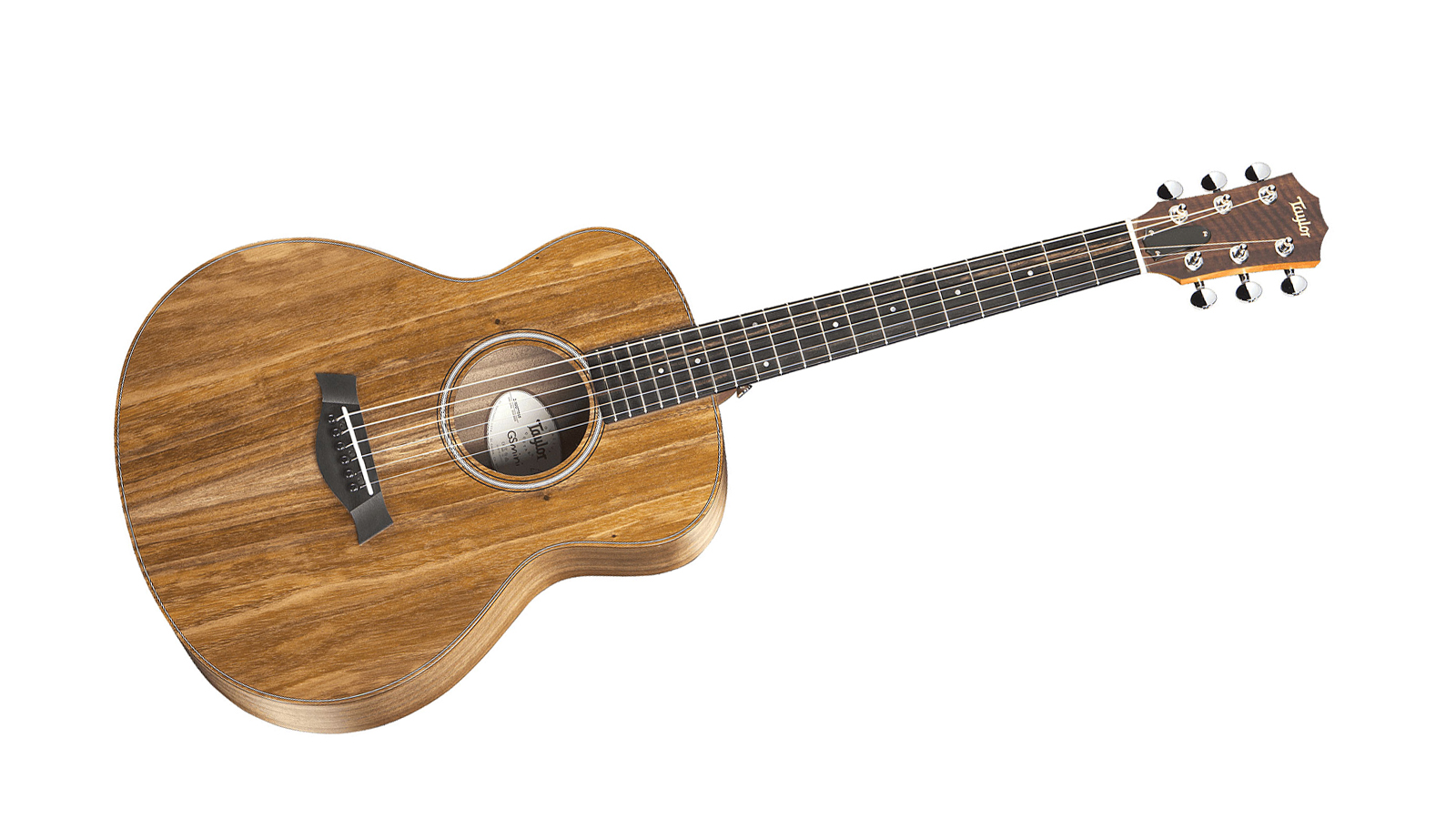
2. Taylor GS Mini-e Koa
Our expert review:
Specifications
Reasons to buy
Reasons to avoid
✅ Buy if you want a small guitar: With eye-catching looks, a vibrant sound, and an excellent price point, the GS Mini is one of Taylor's best-selling guitars for a reason.
❌ Avoid if you like playing with thin gauge strings: Combined with the smaller body, this guitar will sound thin without a thicker gauge of strings on it.
Over a decade after its introduction, the GS Mini remains the standard for travel guitars, delivering projection that belies its scaled-down dimensions. As expected from Taylor, the GS Mini-e Koa plays smoothly, with low action and a comfortable neo-tropical mahogany neck.
A great choice for those who want a go-to, home and away acoustic, the GS Mini-e Koa offers easy playability combined with stunning figured grain. The solid koa top lends a warm timbre to the overall tone, and there’s an impressive depth for a guitar of its size.
Its versatility is further boosted by its ES-B pickup/preamp combo, which comes with a handy onboard tuner – ideal for gigging guitarists. As any good travel-sized guitar should, the GS Mini-e Koa comes with a beefy structured gig bag. So if you were to take this pint-sized guitar to a gig or on your travels, it’ll be protected.
Best beginner
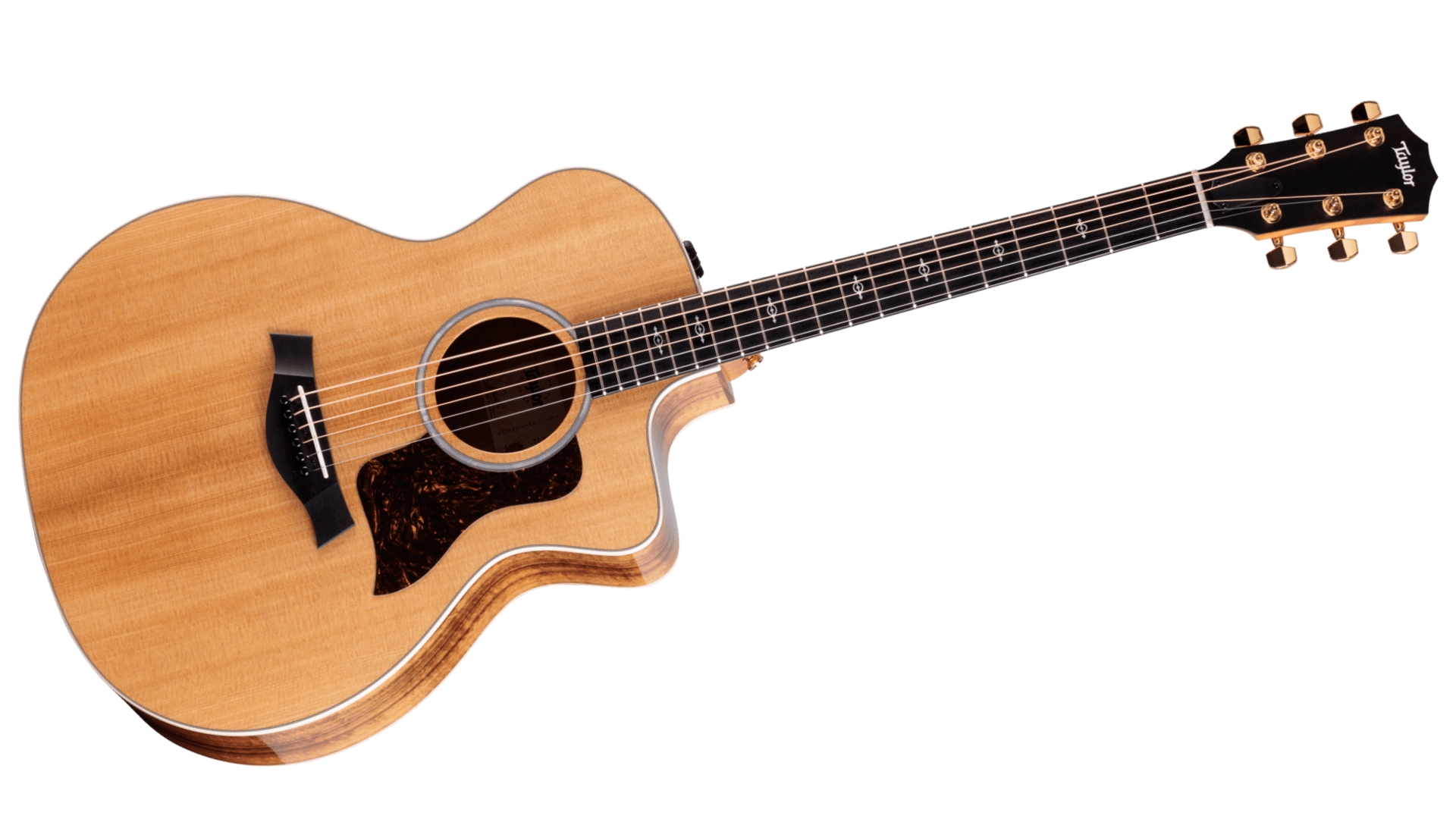
3. Taylor 214ce-K DLX
Our expert review:
Specifications
Reasons to buy
Reasons to avoid
✅ Buy if you're after your first Taylor acoustic: This is a feature-packed, warm acoustic with an ebony fingerboard and great access.
❌ Avoid if you have to have an American-made Taylor acoustic: This model is made in Mexico, so one to avoid if you're a purist.
The 214ce-K DLX is one of Taylor’s more accessibly-priced guitars, sitting below their US-made range, but having the playability and feature-set to go toe-to-toe with just about any acoustic from it.
Though it has a less intimidating price point, it certainly doesn’t skimp on the quality. With solid figured Hawaiian Koa back and sides and a Torrefied Spruce top, the body construction is equal parts eye-catching and robust.
Playability is where the 214ce-K DLX excels, with the Taylor ‘Venetian Cutaway’ providing good access to the high notes, meaning this is a great option for players who frequently solo. A particular highlight is the West African Crelicam Ebony fretboard, which is so beautifully rich and dark, it oozes luxury and provides a fantastic smooth bed upon which your fingers can effortlessly dance.
The 214ce-K DLX is as good as you can get from a Taylor guitar before breaking into their US-made range – this guitar is made in their Mexican factory, though some may expect American at this price point. I’d argue that there really isn’t any need to make the additional outlay to step up, because this does everything you could expect from a pro acoustic.
Best for fingerstyle
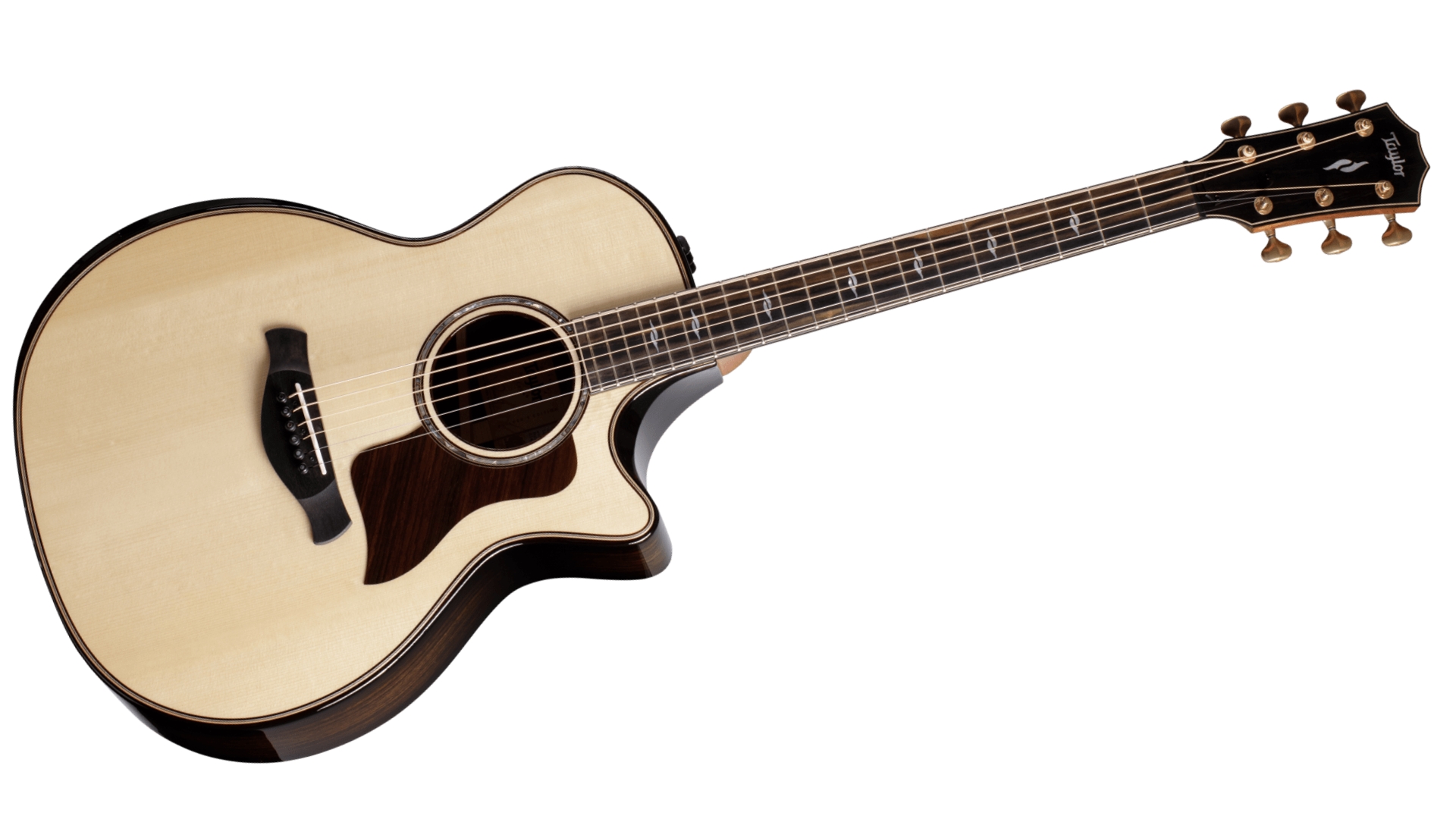
Specifications
Reasons to buy
Reasons to avoid
✅ Buy if you want the ultimate Taylor for fingerstyle: With its superb playing neck and ultra comfortable body shape, this guitar is great for fingerpickers.
❌ Avoid if you want volume: There are other Taylor guitars that have more unplugged volume than this one, so look elsewhere if you need something that's loud.
The Taylor Builder’s Edition 814ce is a truly stunning instrument, and while it can handle pretty much any style, I love it for playing fingerstyle on. It's not cheap, but if you want the best Taylor for fingerpicking, then this is the guitar you've been looking for.
The neck is superbly playable, and the factory action came with a nice, low action. The intonation is absolutely spot on, and playing it feels almost too easy; it's really that good to play. Fingerstyle single notes and arpeggios come effortlessly, and when you do want to strum hard, it responds brilliantly.
The tone is quintessential modern Taylor, light and lively with excellent sustain. It's rich and complex with plenty of sparkle, and will sound great in a band mix. Solo players might want something a little beefier in the volume department, but in terms of quality, it's absolutely brilliant.
One of the best things about the 814ce is the work that's been done on the body for comfort. There's not a single sharp edge anywhere to be found, and the bevels and contours make it incredibly comfortable whether you're playing sitting or standing.

"It all comes at significant cost, of course, as four-and-a-half grand is a chuck-load of cheddar. You could practically have a custom instrument built for that much. On the other hand, just go ask a custom shop for those beveled edges, premium woods, fancy seashells, and high-end tuners and you’ll come to appreciate the value on offer in this flagship Builder’s Edition, which is about as close to a custom shop instrument as you’ll find in a production guitar. It’s gorgeous, plays and sounds like a dream and will only improve as the wood ages."
Read more: Taylor Builder's Edition 814ce review
Best for live performance
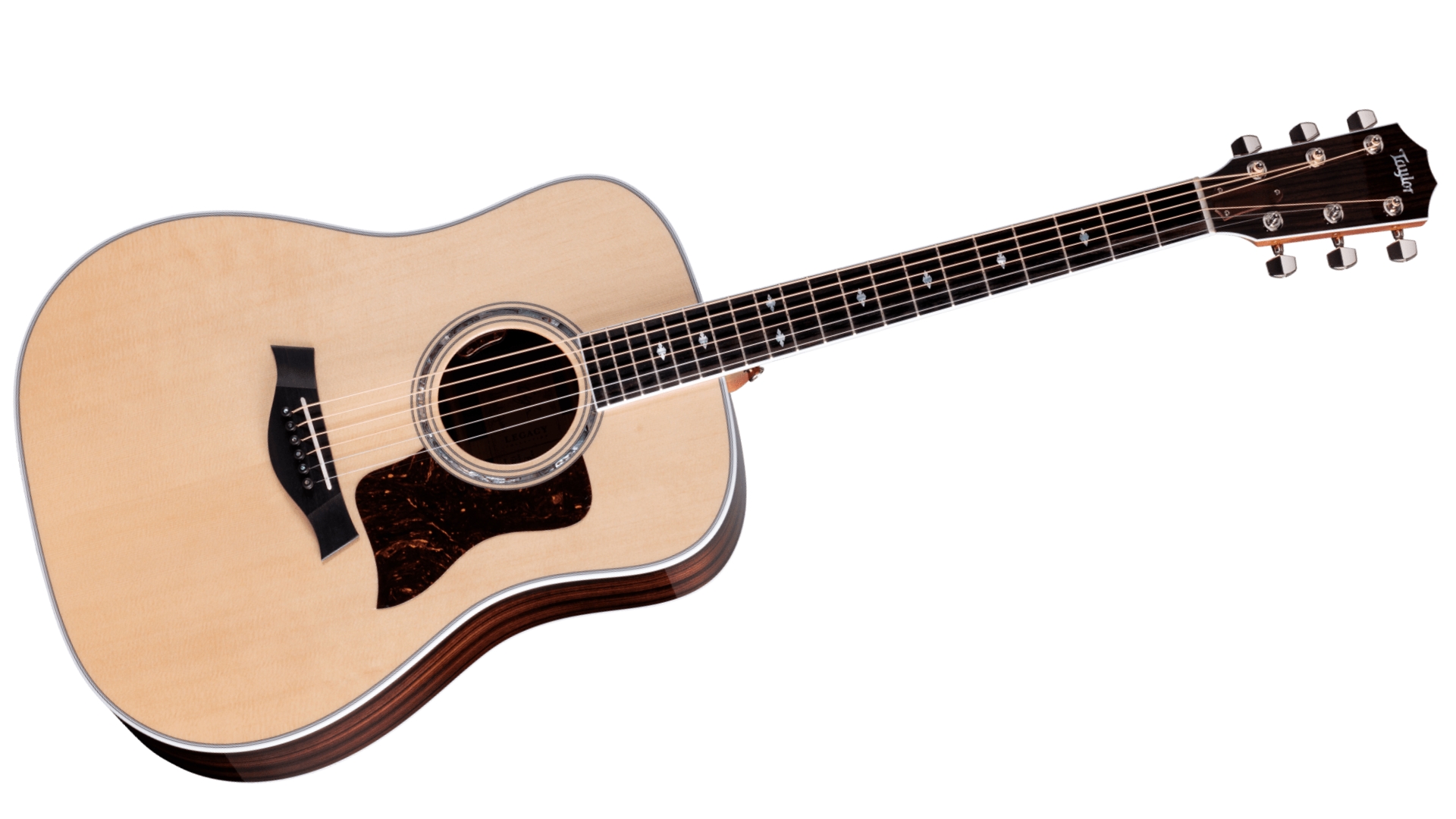
5. Taylor Legacy 810e
Our expert review:
Specifications
Reasons to buy
Reasons to avoid
✅ Buy if you want a Taylor acoustic ready for live performance: This guitar combines a modern neck and playability, with classic appointments and that large dreadnought body shape that make it perfect for playing live.
❌Avoid if if you need upper fret access: That loud unplugged sound does mean you won't get easy-access to 12th fret and beyond, as the big-body doesn’t make this particularly comfortable.
The dreadnought guitar shape – actually developed by Taylor’s primary competition, Martin – is probably the most common and famous style of acoustic guitar in modern times. The 810 was a beloved Taylor dreadnought back in the '90s, and the 810e is a modern-day reissue, with subtle enhancements.
As you would expect from a US-made Taylor, the attention to detail is exquisite, and the powerful haunches of the dreadnought body shape give the guitar an air of authority in looks, feel, and sound.
While Taylor has updated this reissue with some modern features such as the neck profile, they’ve kept as many of the vintage appointments as possible, including X-bracing, rather than their more modern, patented V-bracing – on a smaller guitar, this may impact the tone, but in the substantial body of the 810e, this has no negative bearing on the tone.
If you’re an acoustic player who likes to play a bit of everything, from finger-picking to strumming, the 810e could be the acoustic for you. It will particularly appeal to professionals who are looking for a girthy bottom end and plenty of volume when unplugged, and the addition of an LR Baggs Element VTC pickup gives you natural tones when amplified – it’s pretty much the perfect live acoustic.
Best 12-string
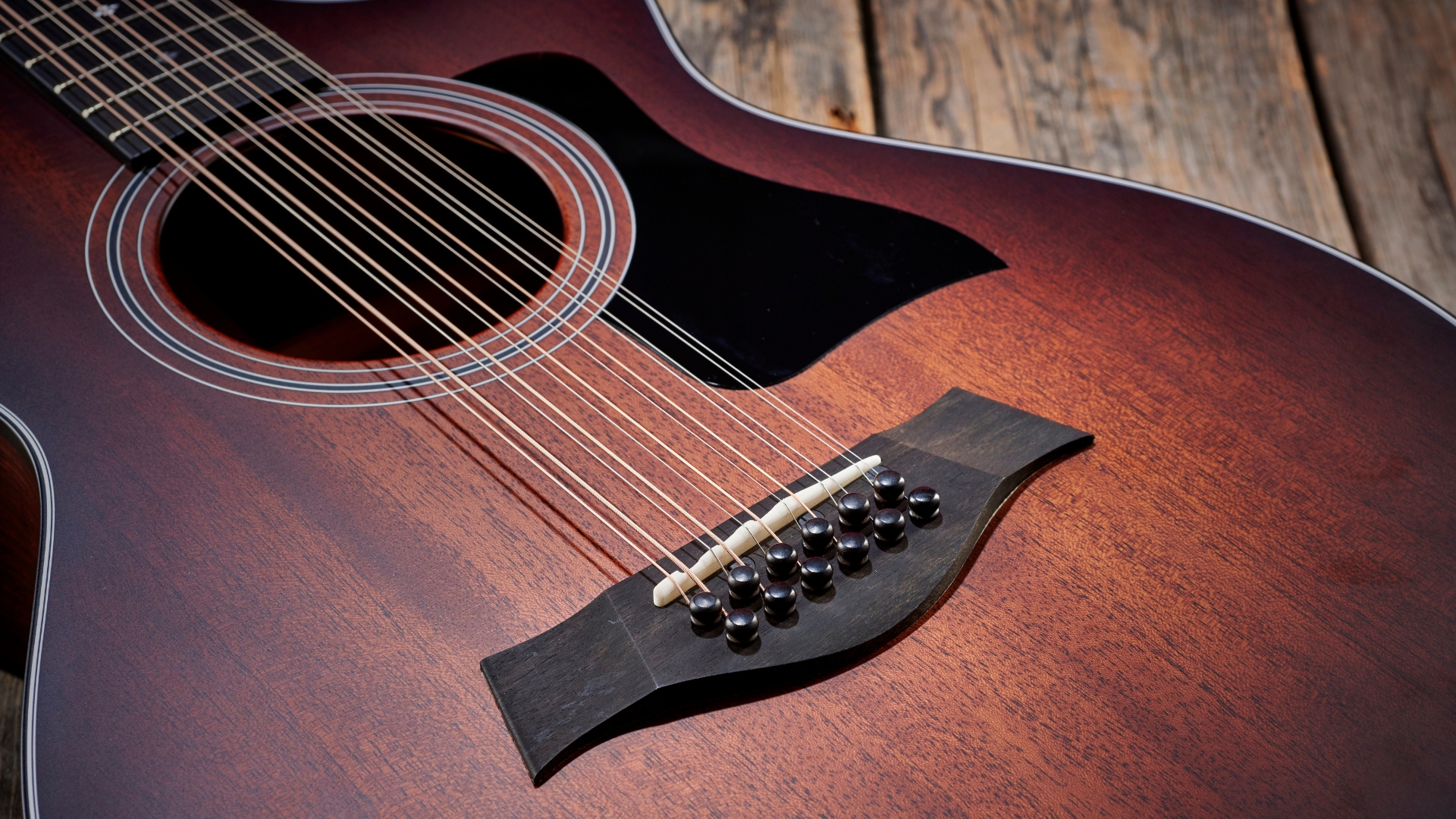
6. Taylor 362ce 12-string
Our expert review:
Specifications
Reasons to buy
Reasons to avoid
✅ Buy if you want a 12-string Taylor acoustic: Sitting nicely at the mid-point in price, the 362ce 12-string is perfect for players wanting to dabble in shimmery 12-string tones.
❌Avoid if you prefer brighter tops: This acoustic is mahogany only, so if you prefer a spruce top, the 352ce would be the best alternative.
When you pick up a Taylor you know you’re getting a quality instrument and that’s no different with the Taylor 362ce 12-string acoustic guitar. It’s a simple, yet classy-looking instrument that’s not top-of-the-range Taylor, but nor is it a low spec either.
If you’ve never played a 12-string before, trust us you’re in for a treat. The 362ce is open and airy with loads of brilliant chime when playing chords or individual notes and plenty of action in the mid and lower ranges too. The all-mahogany construction makes it more balanced than a Sitka-topped guitar, giving a rewarding playing feel.
Some 12 strings are quite difficult to play due to the extra strings and string tension, but that’s not the case here. Playability is nice and easy, and fingerstyle sounds absolutely fantastic, with barre chords coming with ease.
Spec comparison
Still not sure which of my top picks to go for? Well, here you'll find a side-by-side comparison of all the top guitars in this guide, with all their key specs to let you make an easy comparison between the various models.
Model | Type | Top | Back & sides | Neck | Fingerboard | Scale | Frets | Electronics | Lefty? |
|---|---|---|---|---|---|---|---|---|---|
Taylor Builder’s Edition 517e | Grand Pacific (Dreadnought) | Torrefied Sitka spruce | Tropical mahogany | Tropical mahogany | West African Crelicam ebony | 25½” | 20 | Yes | No |
Taylor GS Mini-e Koa | Small Grand Symphony | Solid koa | Koa laminate | Sapele | West African Crelicam ebony | 23½” | 20 | Yes | Yes |
Taylor 214ce-K DLX | Grand Auditorium | Torrefied spruce | Hawaiian koa | Neo-tropical mahogany | West African Crelicam ebony | 25½” | 20 | Yes | Yes |
Taylor Builder’s Edition 814ce | Grand Auditorium | Adirondack spruce | Indian rosewood | Neo-tropical mahogany | West African Crelicam ebony | 25½” | 20 | Yes | Yes |
Taylor Legacy 810e | Dreadnought | Sitka spruce | Indian rosewood | Neo-tropical mahogany | West African Crelicam ebony | 25½” | 20 | Yes | No |
Taylor 362ce 12-string | Grand Concert cutaway | Tropical mahogany | Tropical mahogany | Tropical mahogany | West African ebony | 24.8" | 18 | Yes | No |
Also consider
For me, the above guitars should cover the needs of most acoustic players seeking a Taylor. That said, there's loads of great Taylor acoustic available, so here are some more for you to look at if you didn't find what you were looking for above.
Taylor Builder's Edition 324ce
Solid mahogany top | Urban ash back & sides | Mahogany neck | West African Crelicam ebony fingerboard
Taylor has described Urban Ash as being similar to coveted Honduran mahogany, and, true to the comparison, there’s a strong mid voice on this Grand Auditorium, with excellent sustain clarity when fingerpicking. The Builder’s Edition appointments are subtle rather than showy, but they definitely matter, the upper-bout armrest and chamfered body/fingerboard edges adding comfort, and the Gotoh 510 tuners’ 21:1 ratio offering outstanding precision.
★★★★½
Read more: Taylor Builder's Edition 324ce review
Taylor American Dream Grand Theater AD11E-SB
Sitka spruce top | Walnut back & sides | Tropical mahogany neck | Eucalyptus fingerboard
It’s got a jangly voice thanks to that small body, and whilst there is a respectable low end, it’s not going to compete with full-size dreadnoughts. The midrange focus is delightful with a sparkly high end, and light fingerpicking brings a nuanced response and lovely sustain. Plugged i,n you can handily boost the bass with the onboard EQ, making up for its shortfalls unplugged.
★★★★☆
Read more: Taylor American Dream Grand Theater AD11E-SB review
Taylor 811e Grand Theater
Solid Sitka spruce top | Indian rosewood back & sides | Tropical mahogany neck | West African Crelicam ebony fingerboard
Sitting in the 800 series, the 811e is like a higher-end, larger successor to the much-loved GS Mini range. What sets it apart is the C-Class bracing, which really boosts the projection of this smaller-sized guitar. Combine that with the ever-popular pairing of a solid Sitka spruce top and Indian rosewood back and sides, and you’ve got a small guitar with a huge sound.
★★★★☆
Taylor Academy 12e-N
Lutz spruce top | Sapele laminate back & sides | Mahogany neck | West African Crelicam ebony fingerboard
The Grand Concert shape works beautifully with classical nylon strings, but the neck is narrower than the usual classical fare, making this a good option for those looking to make the transition from an electric or steel-string acoustic. A thin satin varnish helps to enhance the resonance, though it leaves the body more susceptible to knocks.
★★★★☆
Taylor 326ce Grand Symphony
Neo-tropical mahogany top | Tropical mahogany back & sides | Neo-tropical mahogany | West African Crelicam ebony
The 326ce is perhaps the finest example of Taylor's Grand Symphony body shape. Right away, you’ll notice the unique second soundhole, placed in the cutaway. Unique to the Grand Symphony range, Taylor calls this the Soundport, designed for full acoustic immersion, allowing your tone to project more fully around the room. It also disperses the tone around the player, which is a unique experience and is very inspiring.
★★★★☆
How to choose
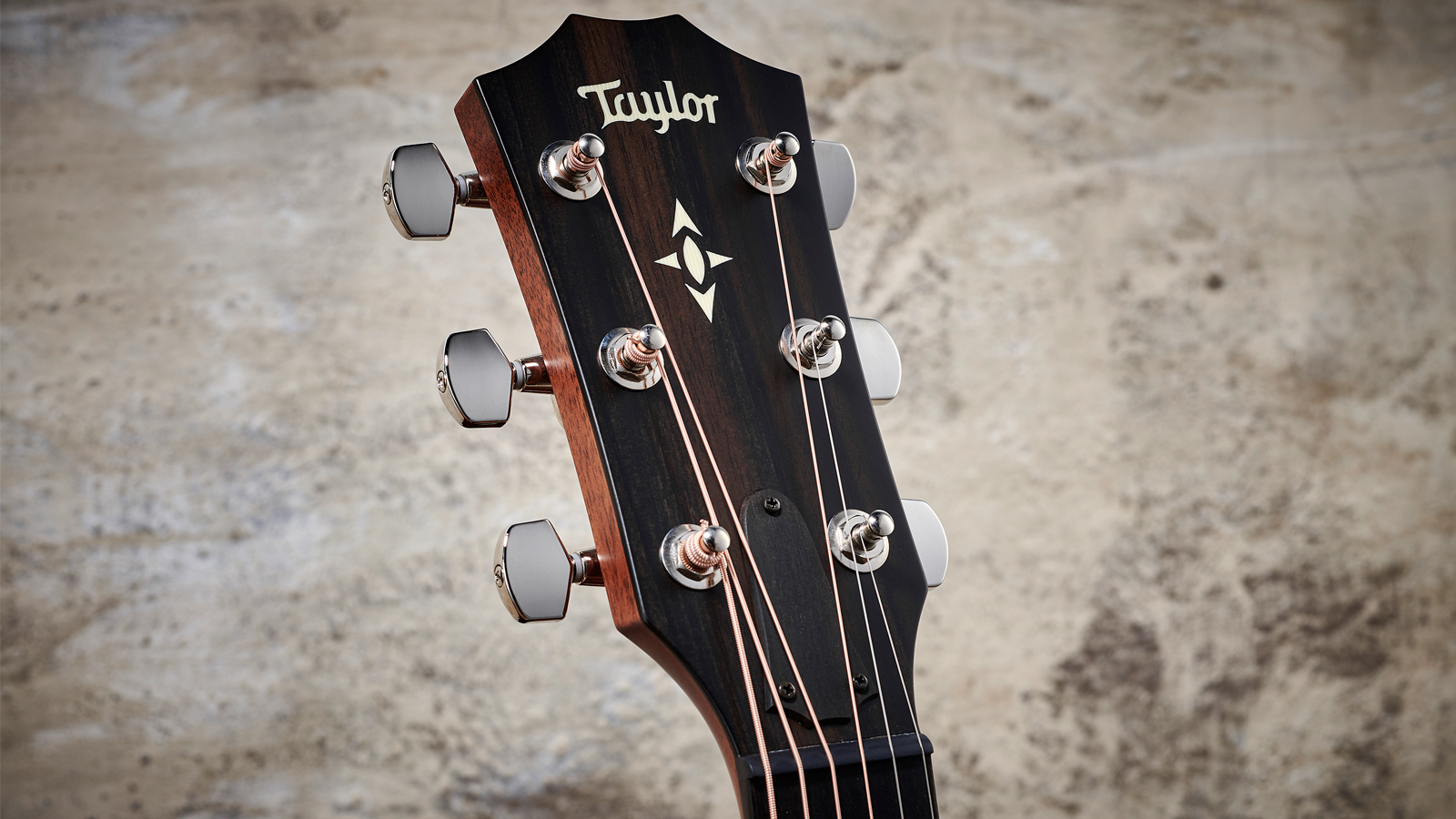
There are a lot of Taylor guitars to choose from, so breaking down what you really need from your purchase is essential, especially when you're potentially spending a lot of money. Here are my recommended steps to outline before you decide which guitar to buy.
1. Budget
You can trust Guitar Player.
Their more cost-effective range of instruments – sitting between the $500-$1,000 mark – offers well built models that will appeal to intermediate players and would be ideal for anybody looking for their second acoustic, or professionals looking for a solid gigging instrument with good electronics, that you won’t lose sleep over if it takes a bit of a beating. While these are more affordable guitars, corners haven’t been cut in quality, as the whole Taylor range features solid wood tops.
At the other end of the scale there is an insane lineup of acoustics sitting atop their range, made from coveted tone woods such as Honduran Rosewood, which will set you back over $10,000. These are the pinnacle of acoustic guitars, from looks to tones. If that’s not exclusive enough, however, you can design your own Taylor from their custom range to produce a truly unique guitar for your exact specifications.
People without quite such outlandish budgets should look no further than the standard USA-made Taylor range. This will still set you back at least a couple of thousand dollars, but the quality absolutely deserves such an outlay. Having had the fortune of playing several USA Taylors, I can say with confidence that they have a sound quality and playability that is pretty much unrivalled.
2. Body shape & size
Taylor offers a wide variety of body shapes, which in turn have different sizes. There's a pretty big difference between the biggest and smallest ones, so making the right decision here is key to your overall comfort with the instrument.
Smaller body shapes will be better if you're a younger or smaller player, or you want something easily transportable, whereas bigger sizes are better for those performing live, or players with larger dimensions that can comfortably use a larger guitar.
The Taylor body guitar shapes, in order of size from smallest to biggest, are as follows:
- Baby: Taylor's smallest size, good for beginners and younger children.
- GS Mini: Taylor's Grand Symphony shape but smaller, good for travel or sofa guitars.
- Grand Theater: Larger than the GS Mini but still relatively small, producing more volume.
- Big Baby: A dreadnought style body made smaller.
- Grand Concert: A nice size for fingerstyle guitarists.
- Grand Auditorium: Taylor's medium body size, the perfect middle ground of comfort and projection.
- Super Auditorium: A body that's slightly longer and wider than the Grand Auditorium.
- Grand Symphony: A shape and size equivalent to a round-shoulder dreadnought.
- Grand Pacific: Taylor's take on the classic dreadnought shape pioneered by Martin, but now used by many acoustic brands.
- Grand Symphony: Larger than the Grand Auditorium, this unique shape features a soundhole in the cutaway.
- Grand Orchestra: Taylor's equivalent of a jumbo size guitar, the biggest model they offer.
3. Electronics
The vast majority of Taylor guitars come with electronics built in, but not all of them feature this. Electronics amplify the guitar's sound allowing you to play through an amp or PA, so while not essential for playing acoustic guitar, they certainly up the versatility factor.
This is a very personal decision, but if you're not likely to be gigging your Taylor, then chances are you might not get much use out of the onboard electronics. If you want to gig your acoustic, or just use an amp and some pedals, make sure you get one with them built-in.
FAQ
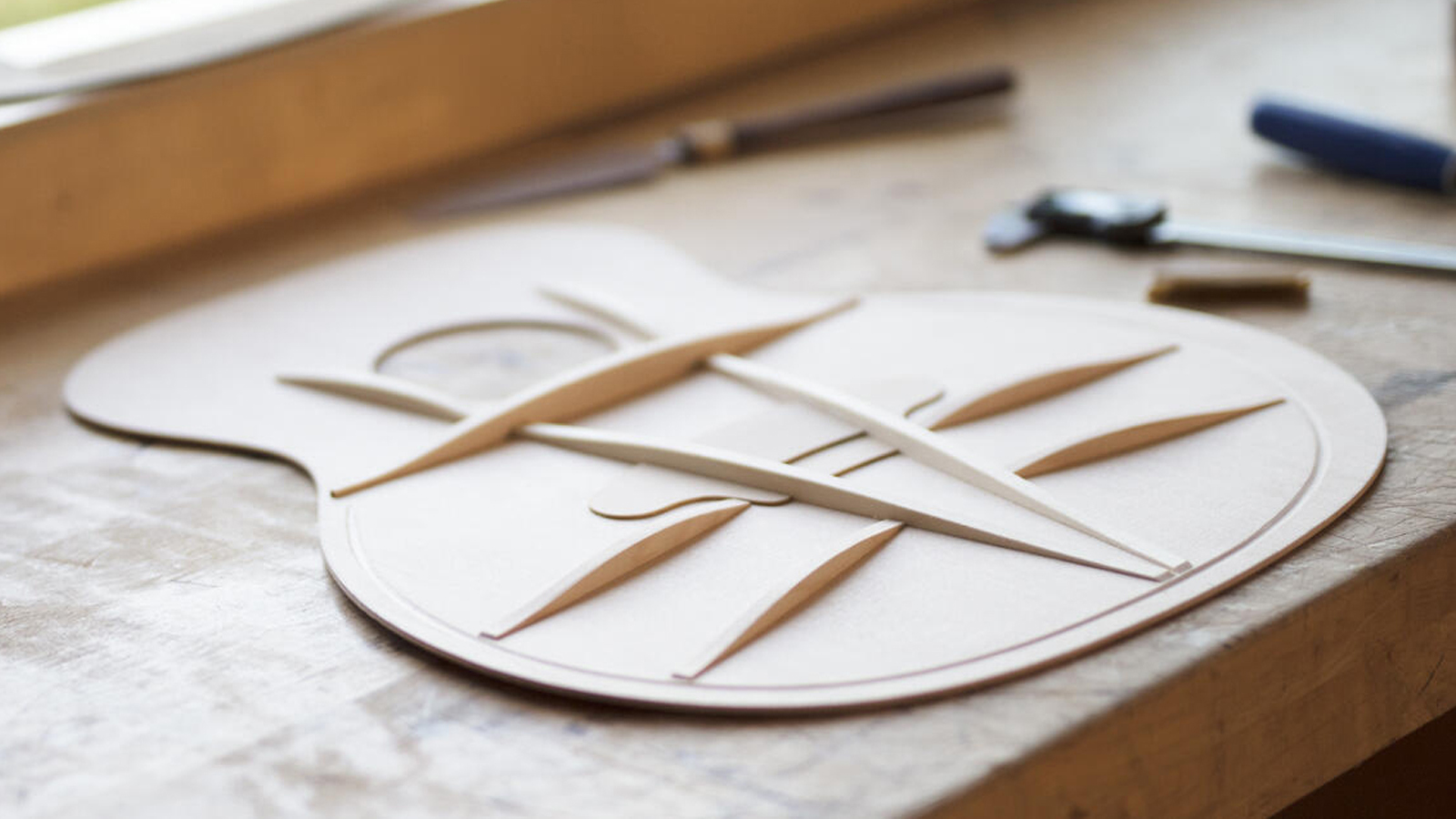
Is Taylor a good guitar brand?
When it comes to premium acoustic guitars, Taylor is widely regarded as one of the best. With over 50 years of experience and as one of the largest guitar manufacturers in the world, quality has become synonymous with the Taylor brand.
Their range spans mid-range, budget-friendly guitars up to the highest echelon of acoustics. While all of their models are among the top options in their respective price brackets, it’s their American range and above that is incredible.
Taylor can also be considered ‘good’ in another way: their ethical use of tone woods. They lead the field in responsibly sourced woods, with every instrument in their range being built of only the best quality, sustainable woods. This may not seem like the top reason to buy a Taylor, but I think it’s one of their most endearing qualities as a brand.
How are Taylor guitars made?
Taylor has a reputation for luthier-made instruments; however, as with any large manufacturer, they use a certain amount of machine technology during construction, such as CNC mills to precisely cut the wood. This use of technology is blended with hand craftsmanship that handles intricate tasks that guarantee the highest level of quality control.
The ratio of machine-to-human will vary depending on which model you purchase (cheaper = more machine, expensive = more human), though every Taylor has some aspect of human interaction. Regardless of the model you choose, sustainably sourced woods are used in their construction.
Perhaps the most interesting thing about Taylor Guitars’ construction is that, despite appearances, since 199,9 all Taylor guitars feature bolt-on necks, named NT (New Technology) Necks. The bolts are hidden within the inside of the guitar, meaning it is glue-free in construction, which ensures that tonal transfer is not inhibited.
Another unique feature is Taylor’s patented V-Class bracing technology. Whilst this doesn’t strictly mean the construction varies wildly – barring that specific part – it is another feature that differentiates Taylors from their counterparts. This features across the majority of their range, though some legacy instruments or reissues may have more traditional bracing.
Who uses Taylor guitars?
From John Petrucci to Jason Collier, Taylor is often the choice of the maestro, looking for unparalleled quality. But it is not just shred-demons, country artists, and pop stars alike choose Taylor guitars, including namesake Taylor Swift. If your favorite player plays acoustic guitar, there’s a good chance that they have played a Taylor at some point.
Do Taylor guitars hold their value?
Renowned for their quality, Taylor guitars generally maintain their value really well – assuming they’re well looked after. Even their more budget-friendly models are likely to hold their value better than comparably priced guitars from other brands, given the prestige associated with the brand. Depending on the exclusivity of the model, it’s not inconceivable that you could actually make money when selling a Taylor guitar.
Do Taylor guitars sound better with age?
As with any acoustic guitar, there is no reason they can’t sound as good as they did from new – or even better – after years of playing, so long as they’re looked after. As acoustics ag,e the moisture in their wood can leave and the natural resins set, which can lead to more complex, overtone-rich sounds. I’ve found that older, well-maintained Taylor acoustics gain an almost intangible harmonic quality that newer models can’t match. It’s very rare in life that buying anything gets markedly better with age, but Taylor’s find a way.
Key terms
- Action: Refers to the height of the strings from the fingerboard.
- Armrest: Taylor guitars often come with a beveled armrest for comfort.
- Bolt-on: A style of neck where the neck is joined to the body with bolts.
- Bridge: The part near the bottom of the guitar that the strings go over.
- Builder's Edition: A premium line of Taylor guitars
- Couch guitar (Sofa guitar): A small body acoustic that's comfortable enough to sit with on the sofa.
- Cutaway: Where a section of the body is scooped out to allow for easier access to the upper frets of a guitar.
- Dreadnought: A large acoustic guitar body shape. Taylor sometimes refers to this as Grand Pacific.
- Fingerstyle: A way of playing guitar where you pluck the strings with your fingers instead of a guitar pick.
- Layered wood: A more cost effective way of producing tonewoods, different from laminate in that it's constructed from a hardwood veneer over a core and backing wood.
- NT neck: Taylor's version of the bolt-on neck that allows you to make adjustments to the angle.
- Nut: Found where the headstock meets the neck, responsible for guiding the strings to the tuning pegs.
- Short scale: A guitar with a smaller distance between the nut and bridge, making it more comfortable to play.
- Sitka spruce: A commonly used tonewood for acoustic guitar tops.
- Tonewood: The wood used to make acoustic guitar bodies.
- V-Class Bracing: A Taylor specific type of bracing found on the inside of the guitar.
How we test
At Guitar Player, we are a team of dedicated guitarists who have immersed ourselves in the world of acoustic guitars. With our profound admiration for Taylor's craftsmanship and tonal excellence, we have meticulously explored and played numerous instruments to identify the best Taylor guitars available today.
To compile our list of top Taylor guitars, we combine our hands-on experience, meticulous research, and insightful discussions with our editorial team. We consider a range of factors including tonal quality, playability, build quality, aesthetics, and value for money, ensuring that we showcase the finest Taylor guitars on the market.
As passionate musicians ourselves, we understand the importance of finding the perfect instrument that resonates with your playing style and musical preferences. Whether you're a fingerstyle virtuoso, a strummer, or an all-around player, our goal is to provide reliable and informed recommendations that help you discover the ideal Taylor guitar for your musical journey.
Read more on how we test gear and service at Guitar Player.
Related buying guides
- Check out the best Martin guitars
- These are the best acoustic guitar strings
- Plug in with one of the best guitar cables
- Get the best of both worlds with the best acoustic electric guitars
All the latest guitar news, interviews, lessons, reviews, deals and more, direct to your inbox!

Rob is the Reviews Editor for GuitarWorld.com, Guitar World magazine and MusicRadar guitars, heading up our in-house reviews team to give you in-depth and honest tests of the latest guitar gear. He eats and dreams reviews.
Rob has 20 years of experience writing, reviewing, interviewing and editing for guitar magazines and websites, including Guitarist and Total Guitar.
Over the years he's interviewed artists including Metallica, Black Sabbath, Pearl Jam and Soundgarden, but he's lost count of all the guitar gear he's tested.
- Connor Godfrey
- Ross Holder
- Matt McCrackenJunior Deals Writer
